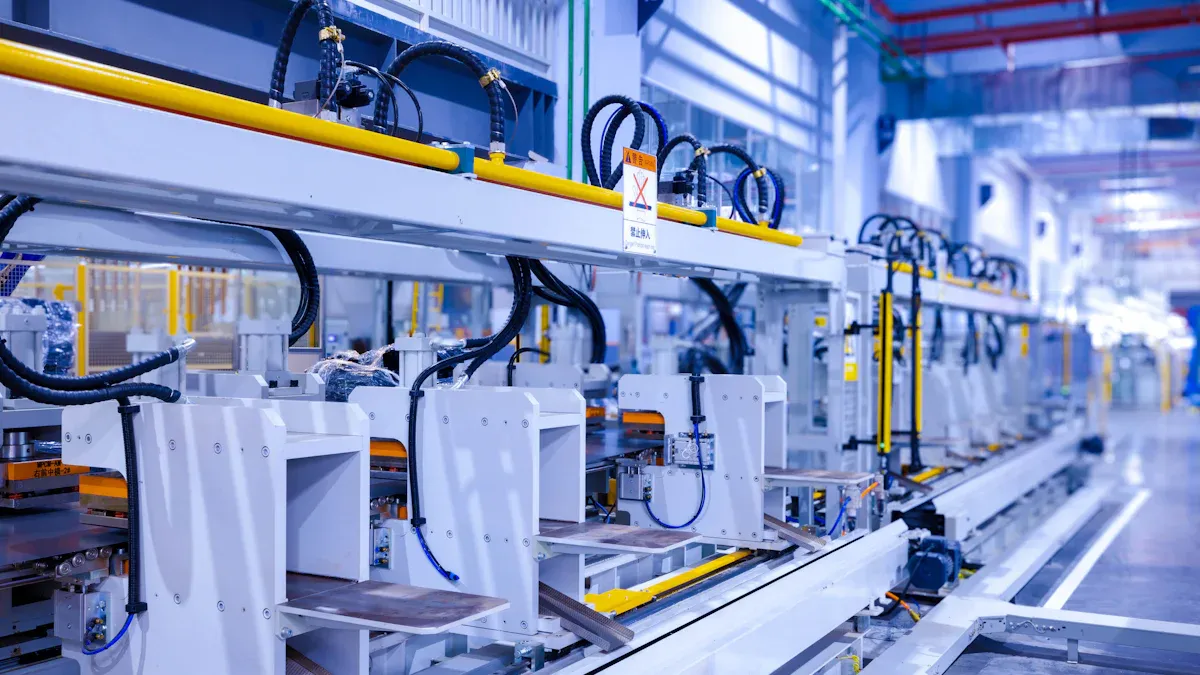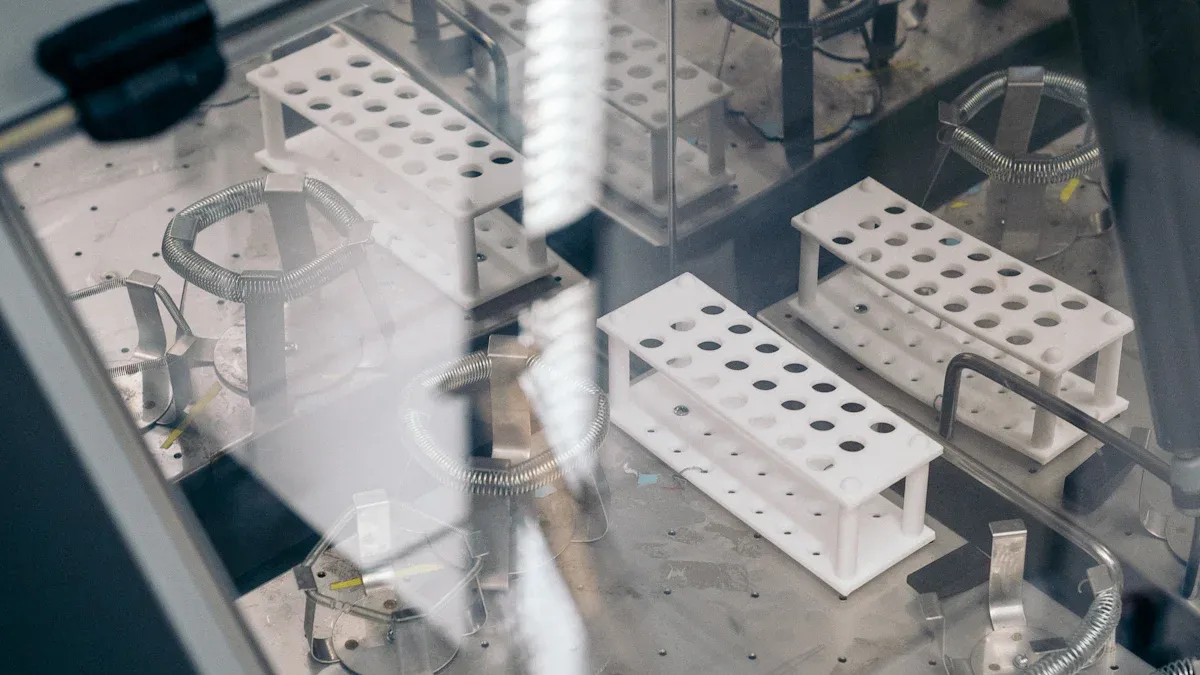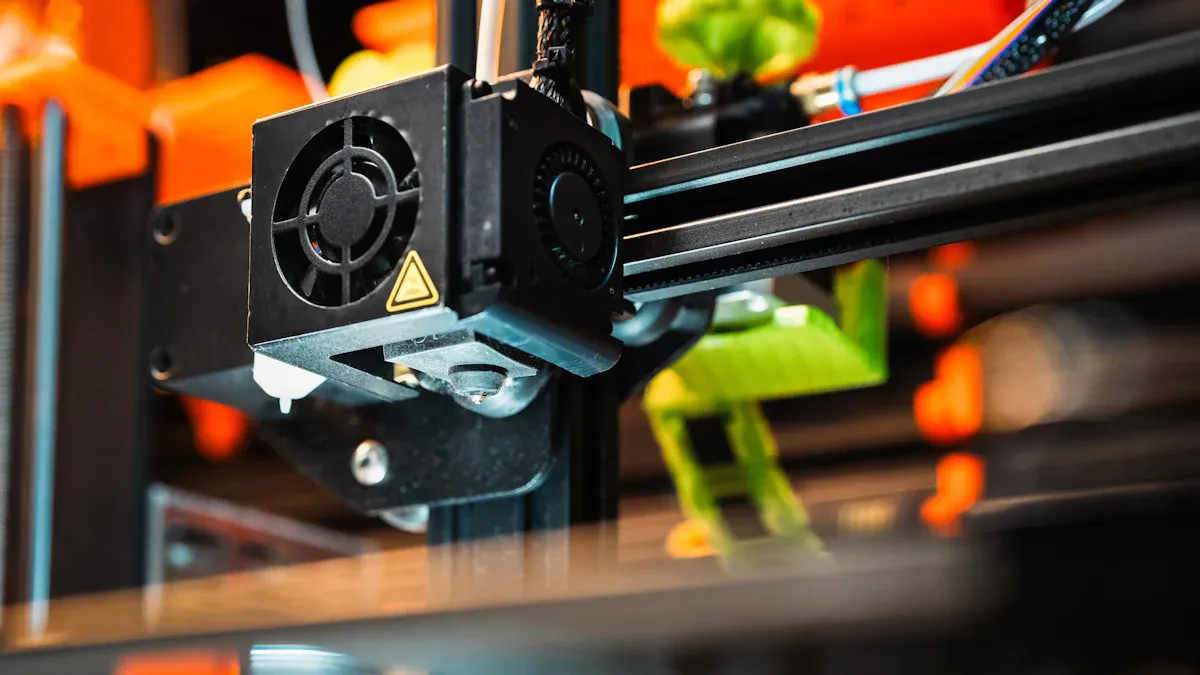
Hot runner systems transform how you approach plastic injection molding. These systems eliminate the need for traditional runners, reducing material waste and cutting costs. They also ensure faster cycle times, enhancing productivity. While the initial investment may seem high, the long-term savings, like eliminating sprue material costs and reducing operational overhead, make them invaluable.
By adopting a hot runner system, you can achieve consistent part quality, fewer defects, and significant material savings, which directly lower your production costs.

Hot runner systems revolutionize the molding process by keeping plastic molten during plastic injection molding. Unlike cold runner systems, they eliminate the need for solidified runners, reducing waste and improving efficiency. These systems use heated components to maintain the plastic's temperature, ensuring consistent flow and quality. Hot runner technology enables precise control over material distribution, making it ideal for producing complex designs with high dimensional accuracy.
A hot runner system consists of several essential components that work together to optimize the molding process:
- Manifold: Distributes molten plastic evenly to the nozzles.
- Nozzles: Inject plastic into the mold cavities with precision.
- Heaters and Thermocouples: Maintain consistent temperatures for uniform melt quality.
- Controllers: Provide accurate temperature control and operational efficiency.
Proper placement of heaters and thermocouples is crucial. Misalignment can lead to overheating or material degradation, affecting part quality. Advanced features like purge wizards and sequential valve gate control enhance functionality, allowing for smoother operations and better flow control.
Hot runner systems offer significant advantages over cold runner systems. They reduce scrap by keeping runners molten, eliminating the need for regrinding. Faster cycle times improve production efficiency, while better melt flow control enhances part aesthetics. However, hot runner systems require a higher initial investment and more complex maintenance compared to cold runner systems.
| Feature | Hot Runner Systems | Cold Runner Systems |
|---|---|---|
| Fast Cycle Times | Yes | No |
| Reduced Scrap | Yes | No |
| Low Initial Setup Cost | No | Yes |
| High Initial Setup Cost | Yes | No |
| High Maintenance Complexity | Yes | No |
| Produces More Scrap | No | Yes |
Hot runner systems excel in high-volume production and complex designs, making them a preferred choice for industries demanding precision and efficiency.

Hot runner systems significantly reduce material waste during injection molding. Unlike cold runner systems, they eliminate the need for solidified runners, which often require regrinding or disposal. This reduction in waste directly translates to material savings, especially in high-volume production. By using hot runner technology, you can achieve a more sustainable manufacturing process while lowering costs.
Additionally, the precise control offered by hot runner systems ensures that only the required amount of plastic is used for each part. This precision minimizes overflows and defects, further reducing material consumption. For manufacturers working with expensive or specialized plastics, these savings can be substantial.
Tip: Adopting a hot runner system not only reduces waste but also aligns your production with eco-friendly practices, which can enhance your brand's reputation.
Hot runner systems excel in improving production efficiency by significantly reducing cycle times. They eliminate the need for cooling and solidification of runners, which are common in cold runner systems. This absence of cooling requirements allows for faster mold cycles, enabling you to produce more parts in less time.
Here are some key ways hot runner systems enhance production speed:
- They reduce the time required for cooling molded parts, leading to shorter overall cycles.
- The absence of solidified runners accelerates each production cycle.
- They optimize the heating and cooling process, ensuring consistent and efficient operations.
These advantages of a hot runner system make them ideal for high-volume production environments. Faster cycle times not only boost productivity but also help you meet tight deadlines without compromising quality.
While hot runner systems require a higher initial investment, they offer reduced maintenance costs over time. Their design eliminates the need for handling and regrinding solidified runners, which reduces wear and tear on equipment. This leads to fewer repairs and lower operational expenses.
Moreover, the advanced temperature control in hot runner systems ensures consistent performance, minimizing the risk of defects and downtime. By investing in a hot runner system, you can achieve long-term savings through improved reliability and reduced maintenance needs.
Note: Regular maintenance and proper calibration of your hot runner system can further extend its lifespan, maximizing your return on investment.
Hot runner systems require a significant upfront investment. The cost of purchasing and installing the system can be much higher compared to cold runner systems. This expense often includes advanced components like heaters, controllers, and specialized nozzles. For small-scale manufacturers or those with limited budgets, this initial cost can be a major hurdle.
However, the long-term savings often outweigh the initial expense. By reducing material waste and improving production efficiency, hot runner systems can help you recover your investment over time. Conducting a cost-benefit analysis before adopting this technology ensures you make an informed decision.
Hot runner systems involve complex technology that demands specialized skills for operation and maintenance. You need to understand how components like the manifold and thermocouples interact. Heat expansion of parts adds another layer of complexity, requiring precise calibration.
To maintain these systems effectively, you must document performance data and maintenance history. This practice simplifies troubleshooting and ensures smooth operations. Tools like Cold Jet dry ice cleaning systems and ultrasonic cleaners can further enhance maintenance efficiency. Investing in training for your team ensures they can handle the technical challenges of hot runner technology.
The complexity of hot runner systems increases the risk of downtime. A malfunction in one component, such as a heater or nozzle, can halt the entire injection molding process. This downtime can lead to production delays and increased costs.
Regular maintenance and monitoring reduce the likelihood of failures. By keeping a close eye on system performance, you can identify potential issues early. Proactive measures, such as routine inspections and timely repairs, help you avoid costly disruptions.
Tip: Partnering with experienced technicians or service providers can minimize downtime and ensure your hot runner system operates efficiently.
Hot runner systems shine in high-volume production environments. Their ability to reduce cycle times and material waste makes them ideal for manufacturing mass-produced products. By eliminating the need for solidified runners, these systems allow you to produce more parts in less time, which directly lowers costs.
For example, in industries like automotive or consumer goods, where thousands of identical parts are required daily, hot runner systems ensure consistent quality and efficiency. The absence of regrinding and handling solidified runners also reduces wear on equipment, further enhancing productivity.
Tip: If your production involves large quantities of identical parts, adopting a hot runner system can significantly boost your output while minimizing waste.
Hot runner technology is a game-changer for intricate product designs. The precise control over material flow ensures that even the most complex mould designs are filled evenly, reducing the risk of defects. This precision is especially critical for products with tight tolerances or intricate details, such as medical devices or electronic components.
Key features of hot runner systems make them perfect for complex designs:
- Precise Heat Control: Thermocouples placed near the flow channel maintain accurate temperatures, ensuring consistent material flow.
- Leak-Proof Design: Advanced systems prevent leakage, ensuring reliability during the molding process.
- Diagnostic Feedback: Temperature controllers provide real-time feedback, allowing you to adjust settings for optimal performance.
- Recipe Storage: Controllers store multiple mold setups, enabling quick transitions between designs.
- Standby Temperature Setting: Automatically lowers temperatures during interruptions, preventing material degradation.
| Feature | Description |
|---|---|
| Precise Heat Control | The thermocouple's proximity to the flow channel allows for accurate temperature management, enhancing productivity and reducing scrap. |
| Leak-Proof Design | St. Clair Plastics reports no leakage issues with CTI hot runner systems, ensuring reliability in the molding process. |
| Diagnostic Feedback | The temperature controller provides complete diagnostic feedback, allowing for better control and flexibility during mold changes. |
| Recipe Storage | The controller can store multiple mold setups, facilitating quick recalls for efficient mold setup. |
| Standby Temperature Setting | Automatically lowers temperature during cycle interruptions to prevent material degradation. |
These features ensure that hot runner systems deliver improved product quality, even for the most challenging designs.
Industries that prioritize high-quality outputs, such as aerospace, healthcare, and electronics, benefit greatly from hot runner systems. These systems provide precise delivery of molten plastic, resulting in parts with minimal gatemarks and superior aesthetics. Consistent heating also reduces defects like bubbles or discoloration, ensuring that each product meets stringent quality standards.
For instance, in the healthcare industry, where precision and reliability are non-negotiable, hot runner systems ensure that medical devices meet regulatory requirements. Similarly, in the electronics sector, these systems produce components with intricate details and flawless finishes.
| Quality Improvement Aspect | Description |
|---|---|
| Improve Part Quality | Hot runners provide precise delivery of molten plastic, enhancing product quality with minimal gatemarks and better aesthetics. |
| Minimal Defects | Products made with hot runners exhibit fewer defects such as bubbles and discoloration due to consistent heating. |
| Reduce Waste | Hot runners minimize plastic wastage by controlling the flow of molten plastic effectively. |
By adopting hot runner systems, you can meet the demands of industries that require precision, reliability, and high-quality outputs.
Note: Investing in hot runner systems not only improves product quality but also positions your business as a leader in delivering premium products.
Hot runner systems reduce costs by improving efficiency and minimizing waste. They save material, enhance production speed, and lower maintenance expenses. Studies show that hot runner technology extends mold life and reduces repair frequency, making it a smart investment. Conduct an economic analysis to evaluate its suitability for your production needs.
Hot runner systems reduce material waste and improve production efficiency. They eliminate solidified runners, saving costs and ensuring faster cycle times for high-volume manufacturing.
Hot runner systems work best for high-volume production. Their high initial cost makes them less practical for small-scale operations with limited budgets.
Regular inspections and proper calibration ensure smooth operation. Use tools like ultrasonic cleaners and document maintenance history to simplify troubleshooting and extend system lifespan.
Tip: Partnering with experienced technicians can help you minimize downtime and optimize system performance.